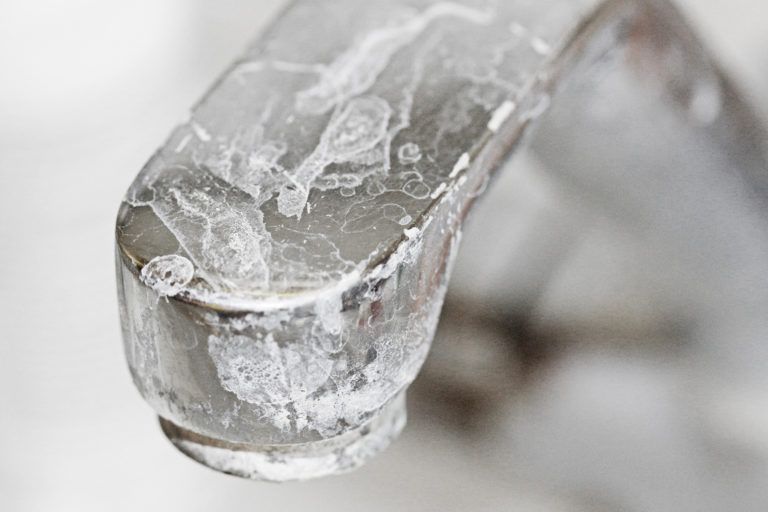
Quick Tips
You catch a glimpse of your reflection in the chrome trim of your car, expecting to see a dazzling shine, but instead, it’s a murky mess of water spots, fingerprints, and some mystery grime. Chrome is supposed to be the eye-catching accent that elevates your space, not a dull, spotted disaster. Whether it’s your car, kitchen fixtures, or bathroom hardware, keeping chrome clean isn’t hard—if you know the right tricks.
Why Cleaning Chrome Matters
Chrome isn’t just about looks—it’s a protective coating that prevents rust and corrosion. When dirt, grime, and oxidation build up, chrome loses its mirror-like shine and becomes vulnerable to pitting and permanent damage. Regular cleaning preserves its luster, extends its lifespan, and ensures that it keeps turning heads for the right reasons.
What You’ll Need to Clean Chrome
Before diving into the cleaning process, gather these supplies:
- Microfiber cloths – Prevents scratches while buffing.
- Mild dish soap and warm water – For general cleaning.
- White vinegar or lemon juice – Cuts through mineral deposits.
- Baking soda or aluminum foil – Removes light rust spots.
- Chrome polish or car wax – Adds protection and shine.
- Soft-bristled brush or old toothbrush – Helps reach tight spaces.
- Distilled water – Prevents hard water stains when rinsing.
How to Clean Chrome in 7 Steps
1. Start with a Gentle Washdown
Before going in with deep cleaners, rinse the chrome surface with warm water to remove loose dust and debris. Mix a few drops of mild dish soap in a bucket of warm water and use a soft microfiber cloth to wipe down the chrome. Avoid rough scrubbing, as chrome is prone to scratching. This initial wash gets rid of surface grime so you can focus on deeper stains without grinding dirt into the finish.
2. Tackle Water Spots with Vinegar or Lemon Juice
If your chrome is covered in hard water stains or mineral deposits, white vinegar or lemon juice will break them down. Soak a microfiber cloth in vinegar or rub a lemon half directly onto the spots. Let the acid sit for 5–10 minutes before wiping clean. If needed, use a soft-bristled brush to gently scrub stubborn spots. The acidity dissolves calcium and lime deposits, restoring chrome’s clarity without damaging the finish.
3. Use Baking Soda or Aluminum Foil for Rust Spots
Light rust spots? No problem. Sprinkle baking soda onto the rusted area, add a little water to form a paste, and gently scrub with a soft cloth or brush. For tougher rust, take a piece of aluminum foil, dip it in water, and rub it over the rusted chrome—this creates a chemical reaction that lifts rust without scratching the surface. Rinse thoroughly with water and dry immediately to prevent new rust from forming.
4. Scrub Tight Spots with a Toothbrush
Dirt loves to hide in the tiny crevices of chrome fixtures, car trim, and kitchen appliances. Use an old toothbrush or a soft-bristled detailing brush to scrub around bolts, seams, and other hard-to-reach areas. Dip the brush in soapy water or vinegar for extra cleaning power. A little elbow grease ensures no hidden grime dulls your chrome’s shine.
5. Rinse Thoroughly with Distilled Water
Once all stains, rust, and grime are removed, rinse the chrome with distilled water. Regular tap water can leave behind minerals that cause streaking and water spots. If you don’t have distilled water, wipe the surface dry immediately after rinsing to prevent spotting.
6. Polish for a Mirror-Like Finish
To bring back that showroom shine, apply a chrome polish or car wax using a clean microfiber cloth. Work in small circular motions, letting the polish dry slightly before buffing it out with a separate clean cloth. This final step enhances the shine, repels water, and adds a protective barrier against future grime and oxidation.
7. Maintain the Shine with Regular Cleaning
To keep chrome looking flawless, wipe it down weekly with a damp microfiber cloth and perform a deeper clean once a month. Avoid harsh scrubbing pads and never use steel wool, as it can permanently scratch the surface. Storing chrome items in low-humidity environments also helps prevent rust from forming over time.
How Professionals Clean Chrome
Professional auto detailers and home cleaning experts use specialized techniques to keep chrome in peak condition, such as:
- Clay bar treatments – Removes microscopic contaminants from chrome surfaces.
- Ceramic coatings – Adds long-term protection against oxidation and rust.
- Steam cleaning – Lifts grime from tight spots without chemicals.
- Professional-grade polishes – Enhances the depth of shine and repels dirt longer.
If your chrome is severely damaged or pitted, professional resurfacing may be necessary to restore its original brilliance (auto detailing experts on chrome care).
How Often Should You Clean Chrome?
- Quick wipe-down: Once a week to prevent buildup.
- Deep cleaning & polishing: Every 3–4 weeks to maintain shine.
- Rust removal: As soon as spots appear to prevent spreading.
- Professional detailing: Twice a year for long-term preservation.
Final Thoughts
Chrome accents should reflect light, not grime. With the right cleaning techniques, your chrome will stay mirror-like and protected for years. Whether it’s on your car, kitchen appliances, or bathroom fixtures, regular maintenance ensures it always looks its best.
For more expert cleaning tips, check out How to Clean Stainless Steel. Keep your metals shining and make everything sparkle!